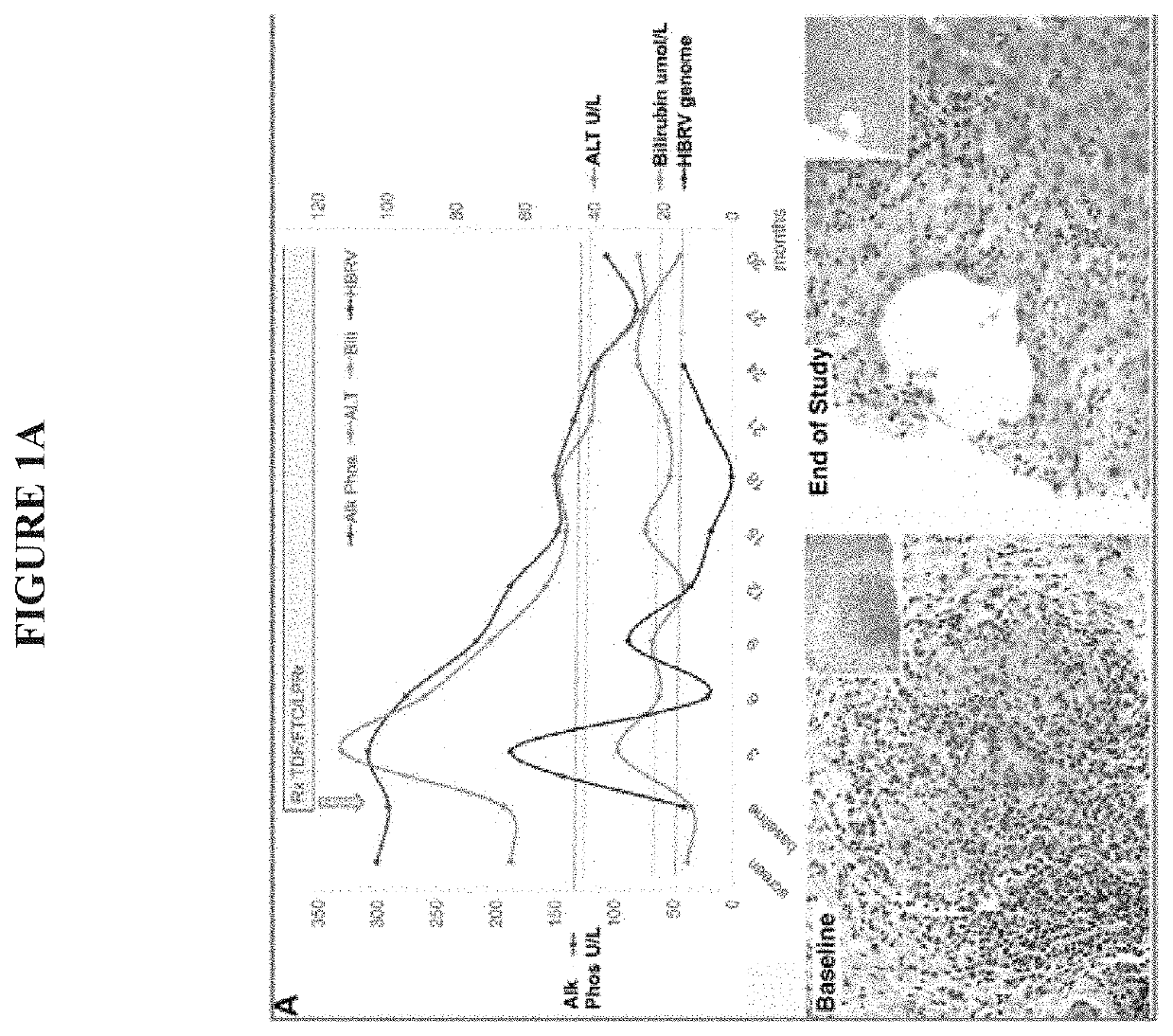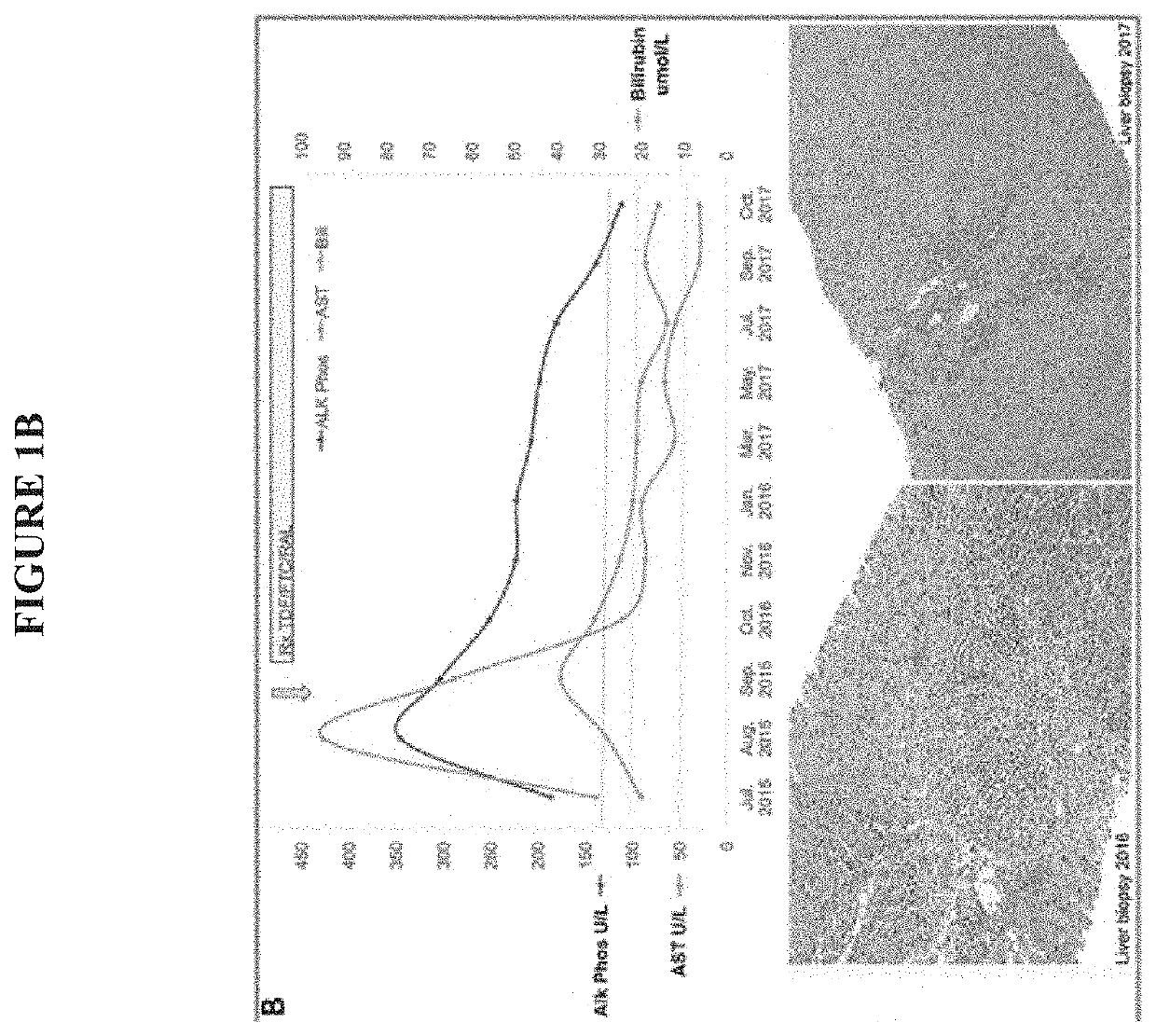Betaretrovirus epitopes and related methods of use
a technology of betaretrovirus and epitope, applied in the field of betaretrovirus proteins, can solve the problems of fibrosis, cirrhosis, fibrosis and cirrhosis, scarring,
- Summary
- Abstract
- Description
- Claims
- Application Information
AI Technical Summary
Benefits of technology
Problems solved by technology
Method used
Image
Examples
example 1
[0131]Characterization of a human betaretrovirus in subjects with PBC. Our lab first took an unbiased approach to cloning a HBRV from subjects with PBC after finding electron microscopy evidence of viral like particles in biliary epithelium, serologic reactivity to retroviruses and retroviral sequences within the liver. The virus was found predominantly in lymph nodes rather than in the liver, similar to observations of MMTV infection in mice. RT-PCR and immunochemistry revealed that 75% of lymph nodes were positive for virus but only 29% of PBC subjects had detectable HBRV RNA in the liver.3 Others have reported that the virus is difficult to find in the liver31,13 and similarly we have shown that hepatic HBRV DNA is rarely detected in the liver (˜5%) using nested-PCR. This has caused controversy because HBRV is absent or below the limits of detection in liver and blood and large case control studies have not been performed.5 Using the “gold standard” to confirm retroviral infectio...
example 2
Immune Responses to HBRV
[0134]To determine proinflammatory lymphocyte responses to HBRV, overlapping 20mer peptides were synthesized (Mimotopes) and aggregated into pools for Gag (n=58) and Env (n=85) or used individually to stimulate lymphocyte preparations (FIG. 4A). Characterized PDC-E2 epitopes from the antigenic inner lipoyl domain were assessed as well.51 Using flow cytometry analysis to detect intra-cellular production of IFN-γ and tumor necrosis factor (TNF)-α, we observed that 38% of PBC subjects had CD8+ responses to HBRV Gag and 7% to Env peptides. No response was observed using characterized PDC-E2 peptides, presumably because the low frequency of autoreactive lymphocytes found in PBMC (FIG. 3). We demonstrated both humoral and cellular immunity to HBRV in PBC subjects.
[0135]Mapping Immunodominant HBRV Peptides.
[0136]We isolated intrahepatic lymphocytes (IHL) to increase the likelihood of finding HBRV reactive lymphocytes (FIG. 3). IHL were extracted from 5 PBC subjects ...
example 3
[0139]Quantiferon™ assays (Qiagen) that measure IFN-γ responses to Mycobacterium tuberculosis (Mth) or cytomegalovirus peptides have known utility for diagnosing and monitoring disease where serological and other tests are less instructive. Because of the multiplicity of HLA haplotypes, a range of about 20-30 immunodominant viral peptides is preferably employed to create an IFN-γ release assay. The assay is performed by collecting 1 ml of blood in tubes with (i) peptides that promote a proinflammatory cognate T cell response, (ii) a negative control with no stimulant, and (iii) a positive control mitogen triggering IFN-γ production. After incubation for 16-24 hours at 37° C., 50 μL plasma is used to measure IFN-γ by ELISA. By subtracting the levels in (i) peptide tube from (ii) negative control, IFN-γ levels >0.35 IU / ml (˜14 pg / ml) are considered positive for the Mtb QuantiFERON assay and the peptide tube IFN-γ levels should be 25% more than the Nil tube. This Quantiferon diagnostic...
PUM
| Property | Measurement | Unit |
|---|---|---|
| Density | aaaaa | aaaaa |
| Immunogenicity | aaaaa | aaaaa |
| Threshold limit | aaaaa | aaaaa |
Abstract
Description
Claims
Application Information
 Login to View More
Login to View More - R&D
- Intellectual Property
- Life Sciences
- Materials
- Tech Scout
- Unparalleled Data Quality
- Higher Quality Content
- 60% Fewer Hallucinations
Browse by: Latest US Patents, China's latest patents, Technical Efficacy Thesaurus, Application Domain, Technology Topic, Popular Technical Reports.
© 2025 PatSnap. All rights reserved.Legal|Privacy policy|Modern Slavery Act Transparency Statement|Sitemap|About US| Contact US: help@patsnap.com



